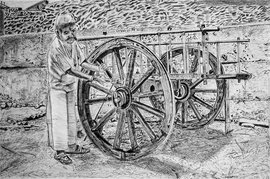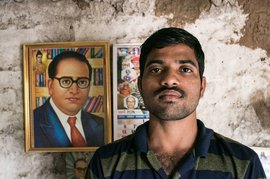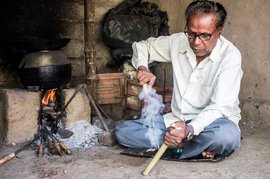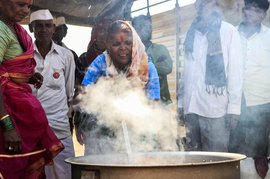Kapashi’s wheel of changing fortunes
PARI volunteer Sanket Jain aims to traverse 300 villages across India and, among other stories, produce this feature: a photograph of a rural scene or event and a sketch of that photograph. This is the first in the series on PARI. Draw the slider either way to see the photo or sketch in full
The wheel still turns, but with less and less frequency in Kapashi village of Maharashtra’s Kolhapur district. The potter's wheel, that is. In a region where potters elevated their craft to an art form. And see themselves as artists. In this village of roughly 6,000 people in Kagal block, says Vishnu Kumbhar, whose hands you see in the photo and sketch, “there were 180 artists in 1964. Today, just four remain in this business.”
Vishnu belongs to the 13th generation of a family that has kept the art of Kolhapuri pottery alive. His own family has not seen a loss of business. But “the number of artists has reduced considerably,” says the man with more than a quarter million hours of pottery behind him. That decline, as people desert pottery – unable to sustain themselves with it – is also pushed by other factors. Machine-made pottery has edged out the potter’s wheel in many places. The younger generation wants to explore other pastures. The existing potters are ageing – and many suffer from back pain.
“My son works in the sugar factory and can help only a little. He has not greatly developed his talent for this,” Vishnu says. “So, I am training my daughter-in-law, his wife, to continue our art.”



